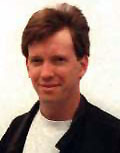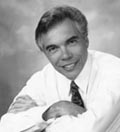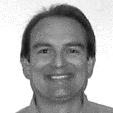Three popular presentations have been added to Jefferson Lab's Fall Science Series schedule. Each one promises to be a stimulating, educational foray into scientific topics, says Linda Ware, Lab Public Affairs manager.
 On Wednesday Oct. 23, Sean M. Carroll from the University of Chicago's Center for Cosmological Physics, brings to the Lab his discussion of "Dark Energy and the Preposterous Universe." A variety of observations have led cosmologists to conclude that the universe is dominated by a mysterious form of "dark energy" (in addition to the well-established "dark matter," which now seems prosaic by comparison). This dark energy could be vacuum energy (a cosmological constant), or something dynamic and slowly evolving. All of the possibilities are very exciting, and future observations have promise for distinguishing between them. Carroll will give an overview of the theoretical proposals for dark energy and the observational constraints, which any model must satisfy. This dynamic, young professor gives his special presentation at 4 p.m. in the CEBAF Center auditorium. The researcher, author, and teacher is also a member of NASA's Structure and Evolution of the Universe Roadmap Team.
On Wednesday Oct. 23, Sean M. Carroll from the University of Chicago's Center for Cosmological Physics, brings to the Lab his discussion of "Dark Energy and the Preposterous Universe." A variety of observations have led cosmologists to conclude that the universe is dominated by a mysterious form of "dark energy" (in addition to the well-established "dark matter," which now seems prosaic by comparison). This dark energy could be vacuum energy (a cosmological constant), or something dynamic and slowly evolving. All of the possibilities are very exciting, and future observations have promise for distinguishing between them. Carroll will give an overview of the theoretical proposals for dark energy and the observational constraints, which any model must satisfy. This dynamic, young professor gives his special presentation at 4 p.m. in the CEBAF Center auditorium. The researcher, author, and teacher is also a member of NASA's Structure and Evolution of the Universe Roadmap Team.
- http://pancake.uchicago.edu/~carroll/
- http://pancake.uchicago.edu/~carroll/notes/
- http://universe.gsfc.nasa.gov/people.html
 Then after a late October engagement in London, internationally known physicist and Jefferson Lab's Interim Deputy for Science Frank Close comes to the Lab on Wednesday, Nov. 6. Beginning at 7 p.m. in the CEBAF Center auditorium, he will take his audience on an exhilarating tour of the subatomic world with his presentation: The Particle Odyssey, which is based on his new book "The Particle Odyssey: A Journey to the Heart of Matter," written by Close, with Michael Marten and Christine Sutton. The book is an updated, re-release of the popular "The Particle Explosion."
Then after a late October engagement in London, internationally known physicist and Jefferson Lab's Interim Deputy for Science Frank Close comes to the Lab on Wednesday, Nov. 6. Beginning at 7 p.m. in the CEBAF Center auditorium, he will take his audience on an exhilarating tour of the subatomic world with his presentation: The Particle Odyssey, which is based on his new book "The Particle Odyssey: A Journey to the Heart of Matter," written by Close, with Michael Marten and Christine Sutton. The book is an updated, re-release of the popular "The Particle Explosion."
Many of the images he will show are from the book, which has been cited as having more than 100 of the best particle "event" photographs ever taken. These images — often considered mysterious, abstract and beautiful — track subatomic particles as they speed, curve, dance, or explode through cloud and bubble chambers, stacks of photographic emulsion, and giant multi-element detectors. He describes the history of experimental particle physics: its origins in the discovery of X-rays in 1895; the dissection of the atom; the unexpected revelations of cosmic rays; the discovery of quarks and the rise of the "standard model" in the last part of the 20th century. He will also look at the great questions that face physicists today: Where did antimatter go? What is dark matter? Can there be a theory of everything?
Frank Close is a particle physicist at Oxford University and has spent several years working at CERN near Geneva, Switzerland, home to the largest particle accelerator in the world. He has authored several popular science books, including "Too Hot to Handle," "Lucifer's Legacy," and "The Particle Explosion."
- http://lhcb-public.web.cern.ch/lhcb-public/html/frank.htm
- http://www.exeter.ox.ac.uk/about/A-II-Close.htm
The third event added to the schedule is a presentation on the Expansion of the Universe by Lawrence Berkeley National Laboratory Scientist Michael Levi. He will be featured at 7 p.m. on Monday, Nov. 11, in the CEBAF Center auditorium. Levi is a major participant in SNAP: the Supernova/Acceleration Probe program, studying the dark energy of the universe.
 Events previously scheduled include "Chemistry: It's More Than Puffs and Bangs!" on Tuesday, Oct. 29. This event features Joe Schwarcz, from the McGill Office for Chemistry and Society, Montreal, Canada. He will conduct a series of educational and entertaining demonstrations that convey the excitement of science in general and chemistry in particular.
Events previously scheduled include "Chemistry: It's More Than Puffs and Bangs!" on Tuesday, Oct. 29. This event features Joe Schwarcz, from the McGill Office for Chemistry and Society, Montreal, Canada. He will conduct a series of educational and entertaining demonstrations that convey the excitement of science in general and chemistry in particular.
 The last event for 2002 is scheduled for Tuesday, Nov. 19, and will feature Kevin Pope, Geo Eco Arc Research, Aquasco, Md., presenting "Dinosaur Extinctions and Giant Asteroids." He will share the story of the Chicxulub impact crater, created 65 million years ago by the asteroid that wiped out the dinosaurs.
The last event for 2002 is scheduled for Tuesday, Nov. 19, and will feature Kevin Pope, Geo Eco Arc Research, Aquasco, Md., presenting "Dinosaur Extinctions and Giant Asteroids." He will share the story of the Chicxulub impact crater, created 65 million years ago by the asteroid that wiped out the dinosaurs.
- http://www.planetary.org/html/news/Italy/people/people/kevin.html
- http://www.planetary.org/html/news/Italy/
- http://geophysics.ou.edu/ahern/
All Science Series events begin at 7 p.m. in Jefferson Lab's CEBAF Center auditorium, located at 12,000 Jefferson Ave., Newport News. The presentations last about one hour with a question and answer period at the end. The events are free and open to anyone interested in learning more about science. For security purposes during Science Series events, enter at the Lab's main entrance (Onnes Dr.). Everyone over 16 is asked to carry a photo I.D., and security guards may perform vehicle checks.
For more information about Jefferson Lab's Science Series events, visit: http://education.jlab.org/scienceseries/currentseries.html
For directions to JLab, visit http://education.jlab.org/scienceseries/map.html

